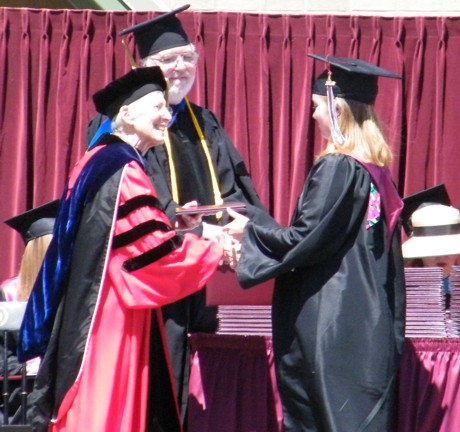Wally World does not often impress me but they did on Friday.
The Internoodle is rife with estimates of Wal-Mart’s cost to We the Overtaxed People, protests over sprawl, criticism of their labor practices in this country and the labor conditions in supplier factories around the globe, complaints about unfair treatment specifically of the women who work in the stores and Supercenters, shoddy assembly of most consumer goods driven by the way the firm has reshaped manufacturing around the world, and far more.
Opponents of a planned Wal-Mart here in North Puffin have protested for almost two decades.
PBS reported, “Wal-Mart’s [Vermont] opponents argue that the state’s economy and culture would be damaged by the retailer’s presence. In California, opponents say the company has cost taxpayers millions by shortchanging its employees on healthcare.”
Every bit of the superstore v. Main Street argument is absolutely true.
Wal-Mart built their fourth Vermont store, a 150,000 square-foot box, in Williston in 1997. I shopped there on Friday.
So did a lot of other people from North Puffin because we don’t have a department store in this county.
We didnt need any other shopperamas a decade ago because we still had Ames back then but Ames closed all its retail stores here in 2002. Since then, pretty much everyone in Northwestern Vermont has had only a couple of choices for sox and underwear: buy them at the supermarket or the Dollar store or pay the I-89 tax to drive an hour to the big box center in the next county.
So I spent the $27.50 in gas to drive the truck to Williston on Friday because we don’t have a department store any closer than that. I also had to go to the Sears Auto Center but that’s a story I’ll tell later.
 I saw a sign for Wal-Mart Interpreter Services in the pharmacy department. That impressed me and I said so to the pharmacy consultant.
I saw a sign for Wal-Mart Interpreter Services in the pharmacy department. That impressed me and I said so to the pharmacy consultant.
“Surely you don’t have all those interpreters in the store,” I said, “and the tricorder/universal translator isn’t out of Google’s prototype lab yet.”
“Nope,” she told me. “All the customer has to do is point to their language on this card. We call a translator at the home office and Bob’s your uncle.”
The store can handle 12 different languages (13 if you count English) from Arabic to Vietnamese. A mom-and-pop operation can’t afford to keep a dozen U.N. translators on staff.
[Oooo, business opportunity!]
Regular readers know that I will not willingly deal with any company that requires me to “Press 2 for English” in part because immigrants to this great melting pot should help us learn their cultures while they assimilate ours and they need to learn English. Without that, America stops being a melting pot and becomes a nation of tiny, armed, walled, exclusive Arabtowns and Chinatowns and Mexicotowns and Viettowns. That said, Wal-Mart’s system to let them do business in their native tongues means they will do business outside their shell communities and that’s a good thing.





